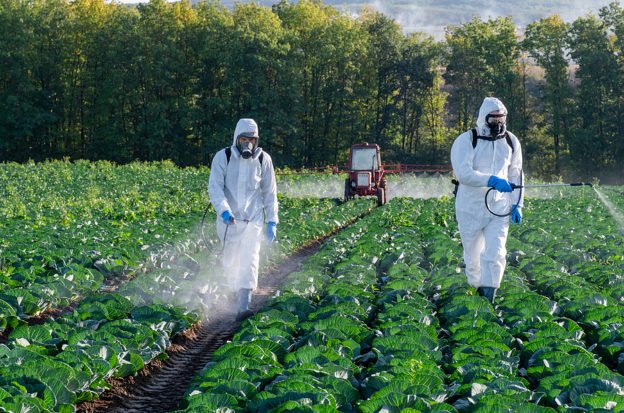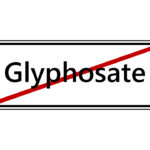By David Blyweiss, M.D., Advanced Natural Wellness
August 6, 2021
In last Monday’s issue of Advanced Natural Wellness, you learned the truth about commercial meats and farmed-fish.
I’m a little particular on this front, because I try hard to keep my weekly dose of poisonous chemicals to a minimum.
But this word of caution doesn’t stop with meat dishes. It’s also a good idea to take a hard look at the fruits and veggies you’re buying. Because every time you venture into the produce aisle, you are surrounded by foods that have been doused in pesticides.
After crops are harvested, even more chemicals are layered on to increase storage life and prevent the foods from spoiling.
You’ve got your glyphosate, which is found in the weedkiller Round Up. It’s nasty stuff. It damages DNA, causes cancer and acts as an endocrine (hormone) disruptor in human cells.
You might think the risk of exposure to this poisonous weedkiller is pretty small. It’s not.
Open your arteries, improve blood flow for a new health miracle...
Did you know your circulatory system has over 60,000 miles of arteries, veins and other blood vessels, if stretched end to end?
But as you age, your blood vessels undergo changes, which may cause them to stiffen, thicken and get clogged.
GOOD NEWS! Doctors have now identified a “Miracle Molecule” inside your arteries that helps OPEN your arteries and IMPROVE blood flow.
It’s what Dr. Valentin Fuster calls it, "One of the most important discoveries in the history of cardiovascular medicine."To you, that means...
- Healthy blood pressure
- Sharper mind and memory
- Skyrocketing energy and muscular strength
- Increased pleasure and passion in the bedroom
- Improved circulation to every cell and organ in your body
Go here to discover a new natural way to significantly boost the levels of this miracle molecule in YOUR body NOW!
Nearly 300 million pounds of glyphosate are used on crops each year, covering over 290 million acres. It’s used in great abundance in GMO corn, soybean and sugar beets. It’s also used on wheat, grapes, oranges, grapefruit and other produce you eat on a regular basis.
And then there’s all that produce we get shipped in from Mexico. But did you know that in Mexico they still use 140 pesticide ingredients that are so harmful they’ve been banned in other countries? They are highly hazardous. They can cause cancer, genetic mutations and hormone alterations. So those non-organic strawberries from Mexico you see in the market?…avoid them if you can.
And let’s not forget the fungicides. They protect crops from mold. We’ve got Imazalil. It’s a likely human carcinogen and hormone disrupter that’s used on a lot of citrus crops. And then we’ve got Mancozeb. It’s used on many fruit, vegetable, nut, and field crops. The chemicals in it target the thyroid, altering hormone levels which could result in thyroid lesions or tumors.
The Most Toxic Produce at the Grocery Store
There are a few organizations that I have a great deal of respect for. One of them is the Environment Working Group (EWG).
Each year this non-profit group analyzes the amount of pesticide residue on the fruits and vegetables you buy at the supermarket. Then they release a report called “The Dirty Dozen™.” It’s a list of commercial produce that contain the highest levels of pesticide residue.
This year strawberries top the list as the most contaminated. Coming in at a close second is spinach. On average, spinach samples had 1.8 times as much pesticide residue by weight as any other crop tested.
Additionally, nearly all samples of greens (kale, collard and mustard), nectarines, apples, grapes, cherries and peaches tested positive for pesticides.
The World's Quickest Solution for Ending Prostate and Urinary Misery
This has recently been revealed to be one of the only real breakthroughs in prostate health.
The seeds of a strange fruit (sometimes called "Chinese Apples") hold powerful phytonutrients that are a revolution in prostate health.
In fact, UCLA and Veterans Administration research have now proved this to be true.
Not only that, but it may be the worlds quickest solution for ending prostate misery.
Simply stated, these phytonutrients represent a huge step beyond beta sitosterol, saw palmetto, and other phytosterols alone.
Simply click HERE if you want to have fast prostate relief...restful, uninterrupted sleep...no more constant "urges to go"...enhanced virility...and optimal prostate support for life.
Pears, celery and tomato also made the list. Hot peppers and bell peppers had the most different pesticides detected – a total of 115.
Now here’s the thing. Most people think that if they wash or peel their fruits and vegetables before eating them, it will remove any dangerous chemicals left behind from the growing process.
Well, when EWG performs their analysis, those are things they take into consideration. Even when these foods were washed – and sometimes when peeled – the pesticides remained.
Of course, when you buy organic you sidestep the issue altogether. In fact, people who buy the most organic produce have significantly less pesticide residue in their urine than people who purchase lower quantities of commercial produce.
So when it comes to the dirty dozen always choose organic. You’ll not only avoid all of that exposure to dangerous chemicals. You’ll also get more nutrition. Compared to commercial fruits and vegetables, organic produce contains up to 69% more flavonones, 51% more anthocyanins and 28% more stilbenes.
Produce that’s Safe to Buy Commercially
Worldwide, nearly 300,000 deaths each year can be traced back to pesticide poisoning. These chemicals are also strongly linked to major diseases like cancer, Parkinson’s, Alzheimer’s, respiratory problems, and reproductive issues.
That makes you think twice about commercial produce, doesn’t it?
But there are some fruits and veggies EWG says is safe to buy commercially grown. They call them the “Clean Fifteen™” and they are least likely to contain pesticide residue. This means you can safely purchase non-organic versions as long as you wash them prior to eating. These include…
- Avocados
- Sweet Corn
- Pineapples
- Onions
- Papayas
- Frozen Sweet Peas
- Eggplant
- Asparagus
- Broccoli
- Cabbage
- Kiwi
- Cauliflower
- Mushrooms
- Honeydew Melon
- Cantaloupe
Just swapping out the Dirty Dozen™ for organic, and washing the items on the Clean Fifteen™ list before eating can make a big difference when it comes to your long-term exposure to these chemicals.
SOURCES:
Koller VJ, et al. Cytotoxic and DNA-damaging properties of glyphosate and Roundup in human-derived buccal epithelial cells. Arch Toxicol. 2012 May;86(5):805-13
Gasnier C. et al. Glyphosate-based herbicides are toxic and endocrine disruptors in human cell lines. Toxicology. (2009) 262: 184–191.
Glyphosate – Response to Comments Usage and Benefits – Final. United States Environmental Protection Agency. Apr 2019.
Gonzalez FJ, et al. Highly Hazardous Pesticides in Mexico. RAPAM. 2018.
Fact Sheet for Imazalil. United States Environmental Protection Agency. Feb 2005.
Fact Sheet for Mancozeb. United States Environmental Protection Agency. Apr 2019.
EWG’s 2021 Shopper’s Guide to Pesticides in Produce™. Environment Working Group. Mar 2021.
Barański M, et al. Higher antioxidant and lower cadmium concentrations and lower incidence of pesticide residues in organically grown crops: a systematic literature review and meta-analyses. Br J Nutr. 2014 Sep 14;112(5):794-811.
Sabarwal A. et al. Hazardous effects of chemical pesticides on human health–Cancer and other associated disorders. Environ Toxicol Pharmacol. 2018 Oct;63:103-114.







